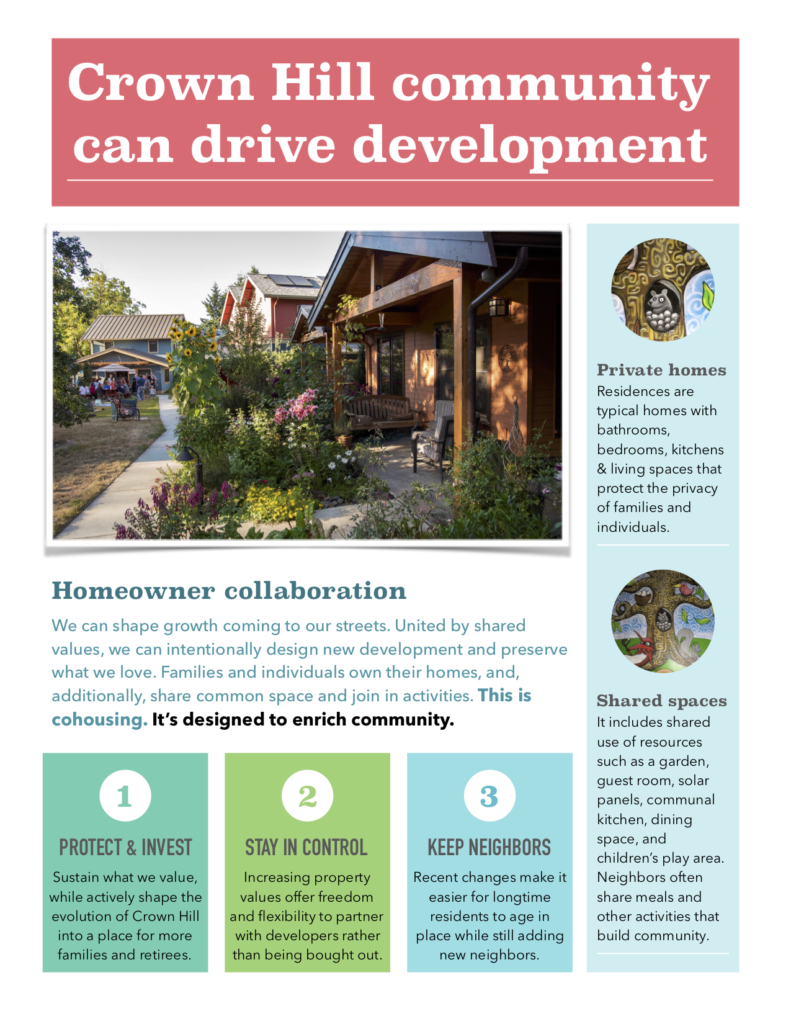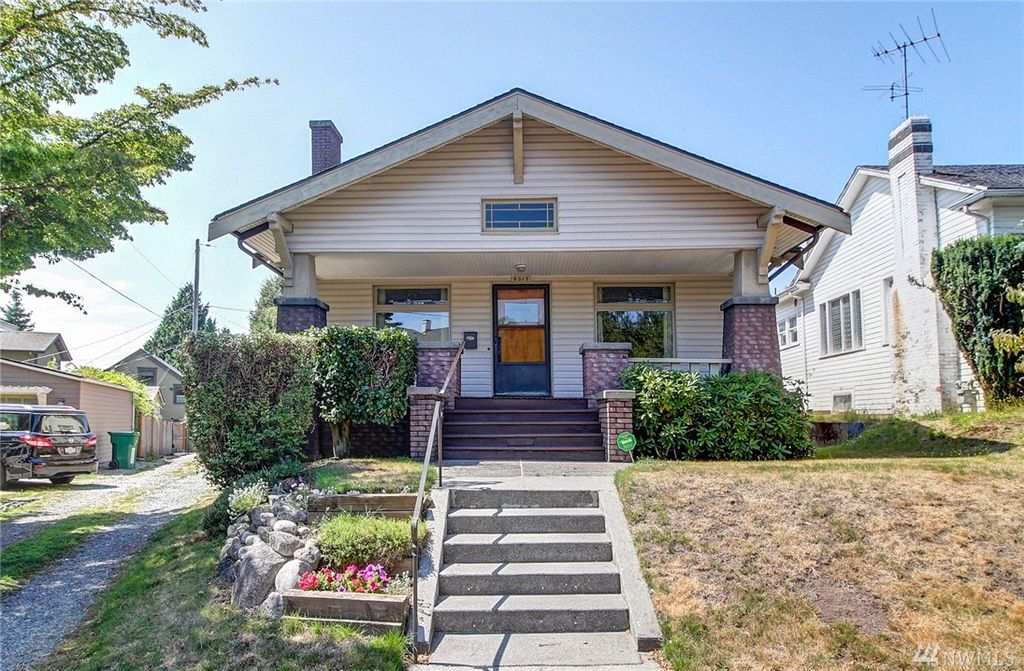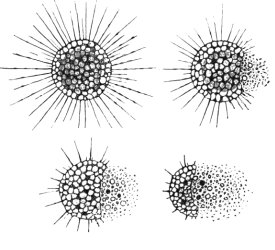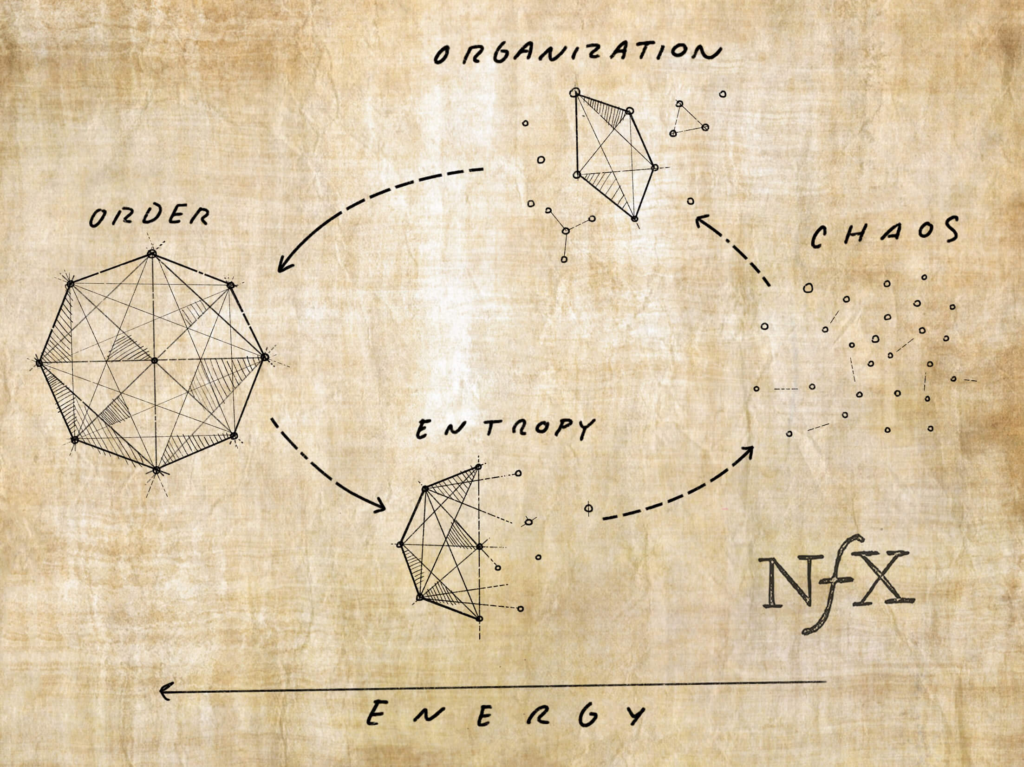“We form cities in order to enhance interaction, to facilitate growth, wealth creation, ideas, innovation, but in so doing, we create, from a physicist’s viewpoint, entropy.”
–theoretical physicist Geoffrey West
Two months ago, my husband, Marcel, and I bought a second home, entered into contract to sell our existing home to a developer, and introduced a level of disorder and chaos, of the physicist’s entropy, into our lives. Our decision was in response to the Seattle City Council’s rezoning of our neighborhood. Small, old houses with spacious yards like ours would be torn down to make space for three or four townhouses. City leaders hoped it would address a housing shortage, rising rents and historic redlining.
Initially we wanted to build a small rental unit on our lot–but that was too expensive. Then we thought we might find neighbors and friends who’d want to invest together, combine lots, and build an intentional community known as co-housing. After all, it was people, not place, that mattered, right?
I floated the idea.

My hand-out to neighbors. Image of cohousing community by developer Orange Splot of Portland; painting details by muralist Ryan Henry Ward of Seattle.
I canvassed the street, knocking on every neighbors’ door, inviting them to brunch in hopes of sparking conversation. I talked it up with friends, sent my extended family on a field trip to visit a cohousing community–so much effort and it fizzled.
“If you ask people why they move to the city, they always give the same reasons,” West said. “They’ve come to get a job or follow their friends or to be at the center of a scene. That’s why we pay the high rent. Cities are all about the people, not the infrastructure.”
I went to a conference, dragged Marcel to a cohousing meeting, a picnic, and along the way met some friendly people. But in the end, we just didn’t want to share a yard, a wall or one more picnic meal with this dreadfully earnest, well-intentioned, cringe-inducing crowd.
When we learned that neighbors to the south and west were selling, that where seven homes now stood there’d be 37 townhouses, that we’d be living with years of construction–we decided to move. In late September we found a fixer-upper three miles east of our current home, a 1918-craftsman with a bit more space, a little less yard, close to public transportation, schools and a patch of urban wilderness. We had 10 months to make it habitable.
Located within the Roosevelt urban village, the 1,800-square-foot house is part of a neighborhood that recently received historic district status. Most of the homes are craftsman or tudors. There is a small garage in the northwest rear of the lot is where a backyard cottage will be built. The 5,000-foot-parcel is bordered on the south and west by a narrow graveled alley.
To help us focus our energy and resources, Marcel and I developed principles for remodeling our home:
- A place for multigenerational living, designed for elders who want to age in place, recognizing the seclusion and independence of the teenager and young adult, honoring the privacy of the couple, creating small spaces for the very young.Â
- We prize the Dutch concept of “gezelligheid.†It is difficult to translate, but encompasses the ideas of coziness, togetherness, warmth, and joy.
- Awareness of where the house is in the neighborhood and to nature through use of views and creation of outdoor “rooms†that create a seamless transition between inside and outside.
- Efficient and beautiful use of space through the reuse and repurposing of materials and resources.
- Emphasis on sustainability and a small carbon footprint.
In our mind we’ve named the property “Entropy House,†a portmanteau of the original owning family (Entrop) and our last name (Levy). Entropy is energy that dissipates as time progresses, and the best explanation I’ve found comes from comics author and humanities professor Nick Sousanis. As he explains, the “arrow of time†is why coffee cools, ice cream melts, and the universe spreads and grows cold. It’s the introduction of chaos and the pervasiveness of disorder; eggs scramble and cannot spontaneously unscramble.
Because entropy’s a reminder that all that’s familiar will end, it’s a call to celebrate the vibrant, chaotic energy of all life, and the rarity of our existence. We like its idea of irreversibility (from thermodynamics) and “surprisal†(from information theory). As an aesthetic, wabi-sabi aligns with this and rings true with us. We’re using Pinterest to gather ideas, designs, etc. I’ll be documenting the remodel here.
- Geoffrey West, theoretical physicist.
- Seattle upzoned map.
- Seattle housing and affordability plan.
- Seattle attempts to rezone away the racial divide.Â
- I was once enchanted with the concept of cohousing.
- The Dutch word for cozy: Gezelligheid.
- My future neighborhood: Ravenna-Cowen North Historic District.
- Comic artist and humanities professor Nick Sousanis understands entropy.
- Wabi-sabi, a world view centered on the acceptance of transience and imperfection.
- My Pinterest page.




Wow, you’ve been busy! I’ve been interested in cohousing for years but my family’s path has simply not wandered in that direction. So we likewise decided to remodel ( our existing house, in our case) with an eye toward Aging in place and making it a hub for family activity. I’m simultaneously sorry you had to leave your neighborhood and beautiful home and happy for you in finding a new and wonderful Landing place.
It’s my dream to remodel a craftsman house into a net zero house! I don’t even know if that’s possible, but maybe someday I’ll try. Looking forward to see your progress on this sweet place.
It’s something we’d love to achieve, too, if only the dollars stretched that far.
It’s been quite a journey, Chris, and only just begun!